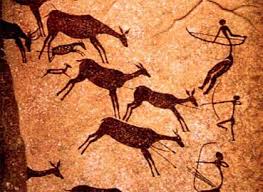Se-tenant: Scutosaurus karpinskii (Liberia 2024)
Scutosaurus karpinskii (Liberia 2024)
05 January (Liberia ) within release Permian Period Fauna (2024) goes into circulation Se-tenant Scutosaurus karpinskii face value 4*200 Liberian dollar
| Se-tenant Scutosaurus karpinskii in catalogues | |
|---|---|
| Colnect codes: | Col: LR 2024.01.05-150 |
Se-tenant is square format.
Also in the issue Permian Period Fauna (2024):
- Souvenir Sheet - Bellerophon jonessianus face value 1,200;
- Se-tenant - Diplocaulus salamandroides face value 4*200;
- Souvenir Sheet - Diplocaulus salamandroides face value 720;
- Mini Sheet - Fauna of the Permian Period face value 4*300;
- Souvenir Sheet - Lycaenops ornatus face value 1,200;
- Se-tenant - Pareiasaurus serridens face value 4*200;
- Souvenir Sheet - Pareiasaurus serridens face value 720;
- Se-tenant - Scutosaurus karpinskii face value 4*200;
- Souvenir Sheet - Scutosaurus karpinskii face value 720;
- Se-tenant - Xenacanthus decheni face value 4*200;
- Souvenir Sheet - Xenacanthus decheni face value 720;
Se-tenant Scutosaurus karpinskii it reflects the thematic directions:
Animals are multicellular, eukaryotic organisms of the kingdom Animalia (also called Metazoa). All animals are motile, meaning they can move spontaneously and independently, at some point in their lives. Their body plan eventually becomes fixed as they develop, although some undergo a process of metamorphosis later on in their lives. All animals are heterotrophs: they must ingest other organisms or their products for sustenance.
Prehistory, also called pre-literary history, is the period of human history between the first known use of stone tools by hominins c. 3.3 million years ago and the beginning of recorded history with the invention of writing systems. The use of symbols, marks, and images appears very early among humans, but the earliest known writing systems appeared c. 5,200 years ago. It took thousands of years for writing systems to be widely adopted, with writing spreading to almost all cultures by the 19th century. The end of prehistory therefore came at different times in different places, and the term is less often used in discussing societies where prehistory ended relatively recently.
Reptiles are tetrapod (four-limbed vertebrate) animals in the class Reptilia, comprising today's turtles, crocodilians, snakes, amphisbaenians, lizards, tuatara, and their extinct relatives. The study of these traditional reptile orders, historically combined with that of modern amphibians, is called herpetology. Because some reptiles are more closely related to birds than they are to other reptiles (e.g., crocodiles are more closely related to birds than they are to lizards), the traditional groups of "reptiles" listed above do not together constitute a monophyletic grouping (or clade). For this reason, many modern scientists prefer to consider the birds part of Reptilia as well, thereby making Reptilia a monophyletic class.



